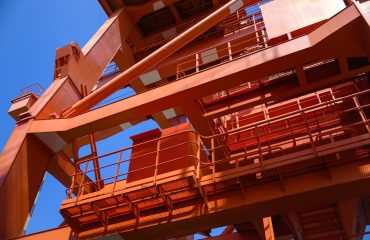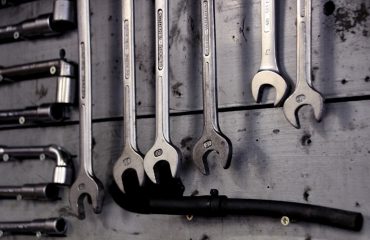Selecting the right piping system is critical in chemical plants. The wrong choice can lead to leaks, corrosion, equipment failure, and even catastrophic accidents. This guide delves into the crucial factors to consider when choosing pipes for your chemical processing facility, ensuring safety, efficiency, and longevity.
1. Understanding Chemical Compatibility: The Foundation of Pipe Selection
The most fundamental aspect of pipe selection is ensuring compatibility with the chemicals being processed. Different materials react differently to various chemicals. Some materials may be completely inert, while others may undergo corrosion, degradation, or even react violently. This necessitates a thorough understanding of the chemical properties of the substances involved, including their pH, temperature, and concentration. Consult material compatibility charts and datasheets provided by pipe manufacturers. These charts typically detail the suitability of different pipe materials for a wide range of chemicals. For complex chemical mixtures, laboratory testing might be necessary to confirm compatibility. Ignoring chemical compatibility can lead to pipe failure, leaks, and contamination of the process stream. Remember to consider not only the primary chemicals but also any potential byproducts or cleaning agents that might come into contact with the pipes.
2. Pressure Ratings and Temperature Considerations: Ensuring System Integrity
Chemical plants operate under varying pressures and temperatures. Pipes must be selected to withstand these conditions without failure. Pressure ratings are expressed in terms of pounds per square inch (PSI) or bars. The selected pipe must have a pressure rating significantly higher than the maximum operating pressure to provide a safety margin. Similarly, the pipe material must withstand the temperature range of the process. High temperatures can weaken materials, leading to creep and eventual failure. Low temperatures can also affect certain materials, causing embrittlement. Temperature variations can also induce thermal stresses within the pipe, necessitating careful consideration of expansion and contraction. Always check the manufacturer’s specifications for both pressure and temperature ratings to ensure the pipe’s suitability for the intended application.
3. Corrosion Resistance: Protecting Against Degradation
Corrosion is a major concern in chemical plants, leading to pipe degradation, leaks, and ultimately, plant downtime. The choice of pipe material significantly impacts corrosion resistance. Stainless steel, particularly austenitic grades like 304 and 316, are known for their excellent corrosion resistance in many chemical environments. Other materials like PVC, CPVC, and various alloys are used depending on the specific chemical and environmental conditions. The selection process should consider factors such as the type of corrosion (e.g., uniform, pitting, crevice), the presence of corrosive agents, and the operating temperature. Protective coatings, such as linings or external wraps, can enhance corrosion resistance. Regular inspection and maintenance are crucial to detect and address corrosion before it leads to significant damage. Consider the cost of corrosion prevention versus the cost of pipe replacement when making your selection.
4. Safety Regulations and Compliance: Meeting Industry Standards
Pipe selection in chemical plants must adhere to strict safety regulations and industry standards. These regulations are designed to prevent accidents and protect workers and the environment. Organizations like ASME (American Society of Mechanical Engineers) and ASTM (American Society for Testing and Materials) provide standards for pipe materials, design, and construction. Compliance with these standards is crucial for ensuring the safe operation of the plant. Regulations may specify minimum wall thicknesses, pressure testing requirements, and material certifications. Failure to comply with these regulations can result in penalties, legal action, and, most importantly, potential hazards to personnel and the environment. Always consult relevant codes and standards during the pipe selection process and ensure proper documentation is maintained.
5. Cost-Effectiveness and Lifecycle Considerations: Balancing Initial and Long-Term Costs
While initial cost is a factor, the lifecycle cost of the piping system should be a primary concern. A less expensive pipe material might require more frequent replacement due to corrosion or failure, leading to higher overall costs. Consider factors like maintenance requirements, expected lifespan, and the cost of potential downtime due to pipe failures. A more expensive, highly durable material might be a more cost-effective choice in the long run, especially in critical applications. Life cycle cost analysis can help in making informed decisions by comparing the total cost of ownership of different piping options over their entire lifespan. This analysis should incorporate factors such as installation costs, maintenance costs, repair costs, and the cost of potential production losses.
Choosing the right piping system is a complex process requiring careful consideration of numerous factors. A thorough understanding of chemical compatibility, pressure and temperature requirements, corrosion resistance, safety regulations, and lifecycle costs is essential for ensuring the safe and efficient operation of a chemical plant. Consulting with experienced engineers and material specialists is highly recommended to ensure the optimal selection for your specific application.
SEO Tags:
- Chemical Plant Piping
- Pipe Material Selection
- Chemical Compatibility Chart
- Industrial Piping Systems
- Corrosion Resistant Piping




